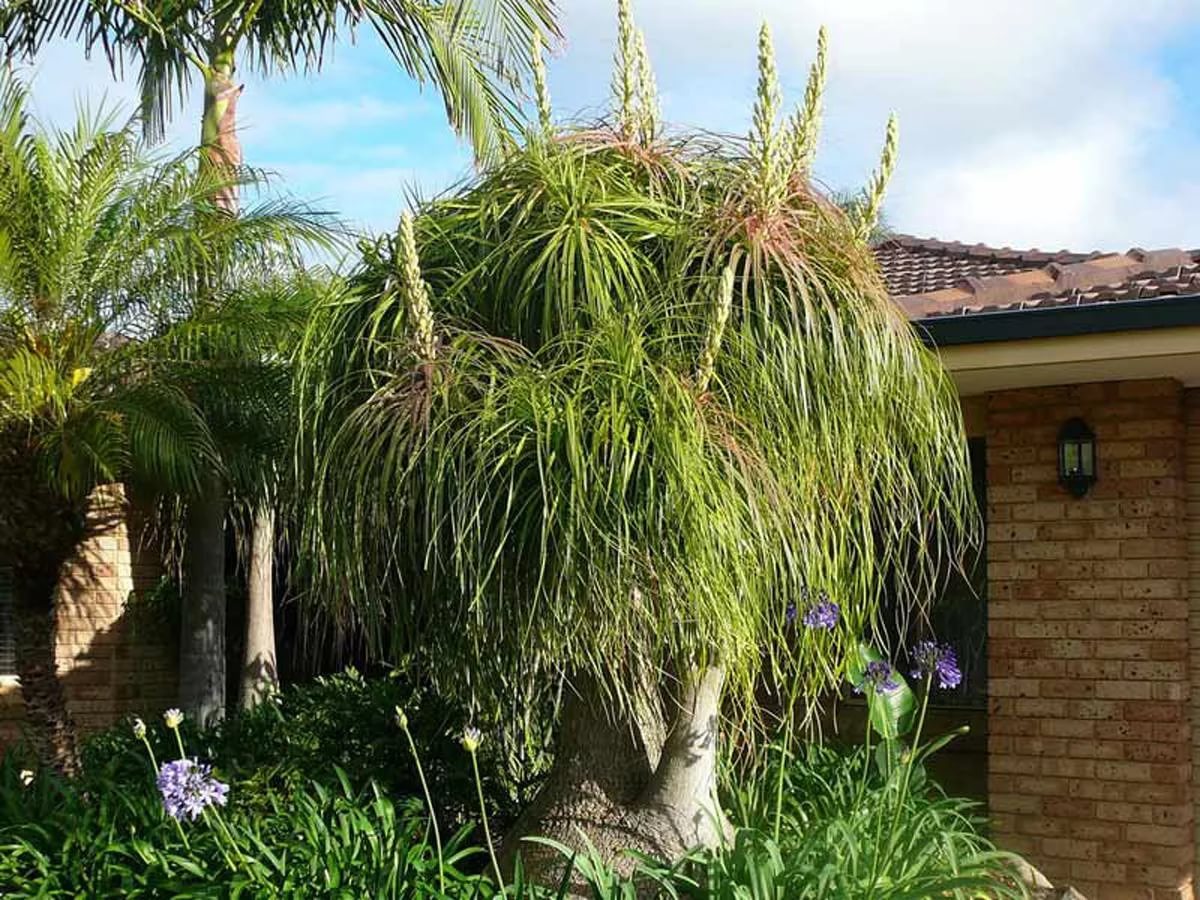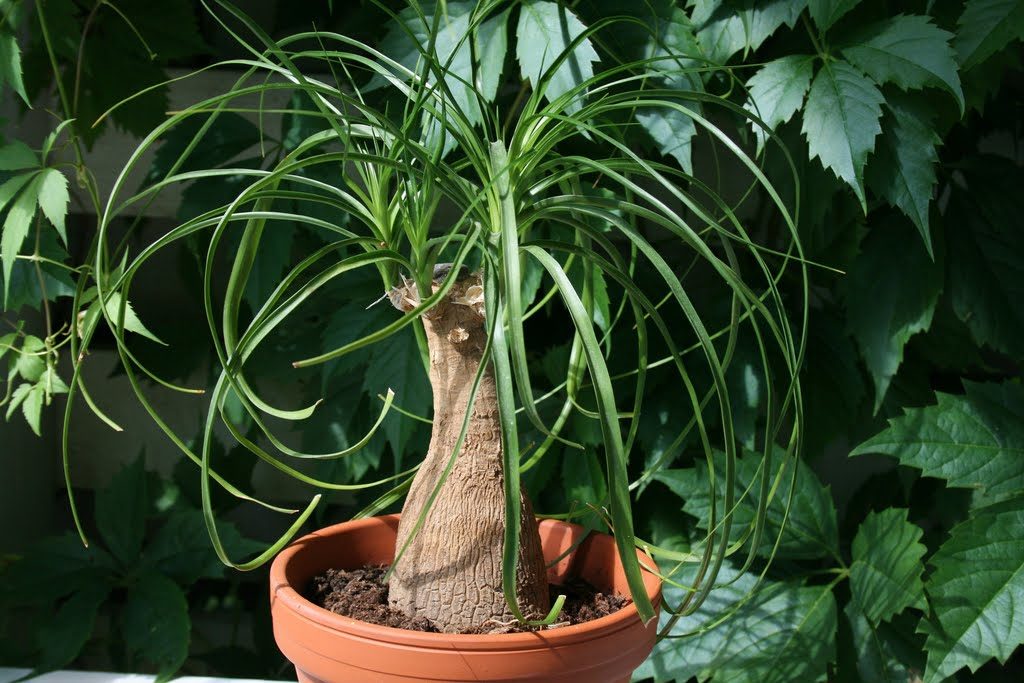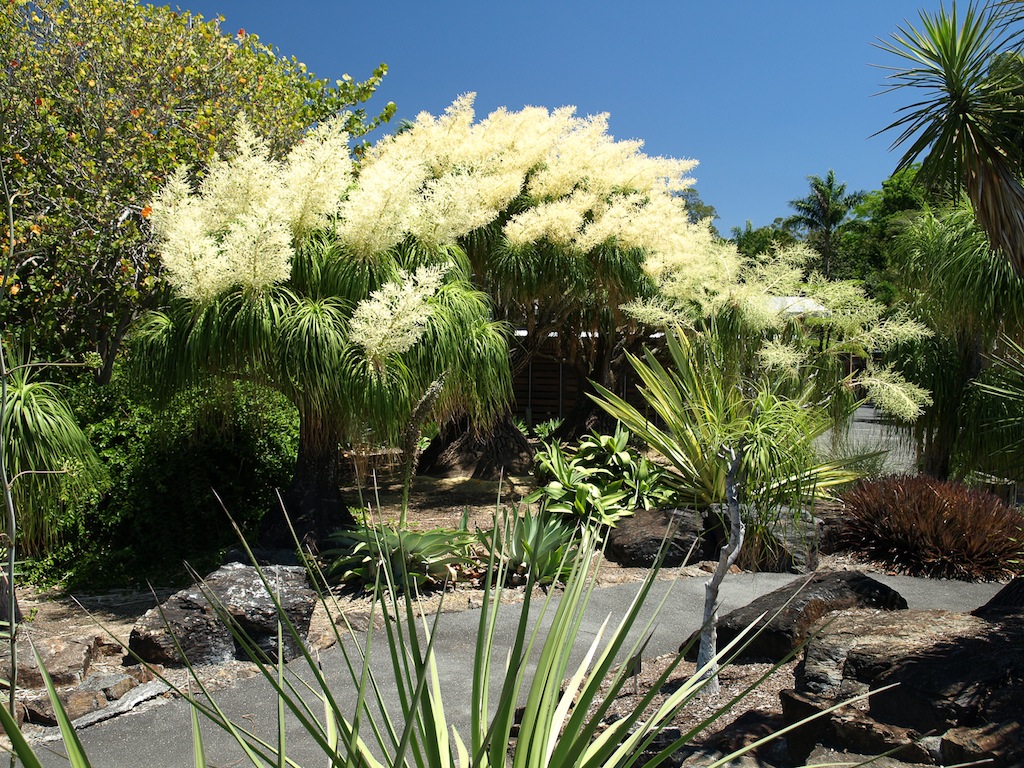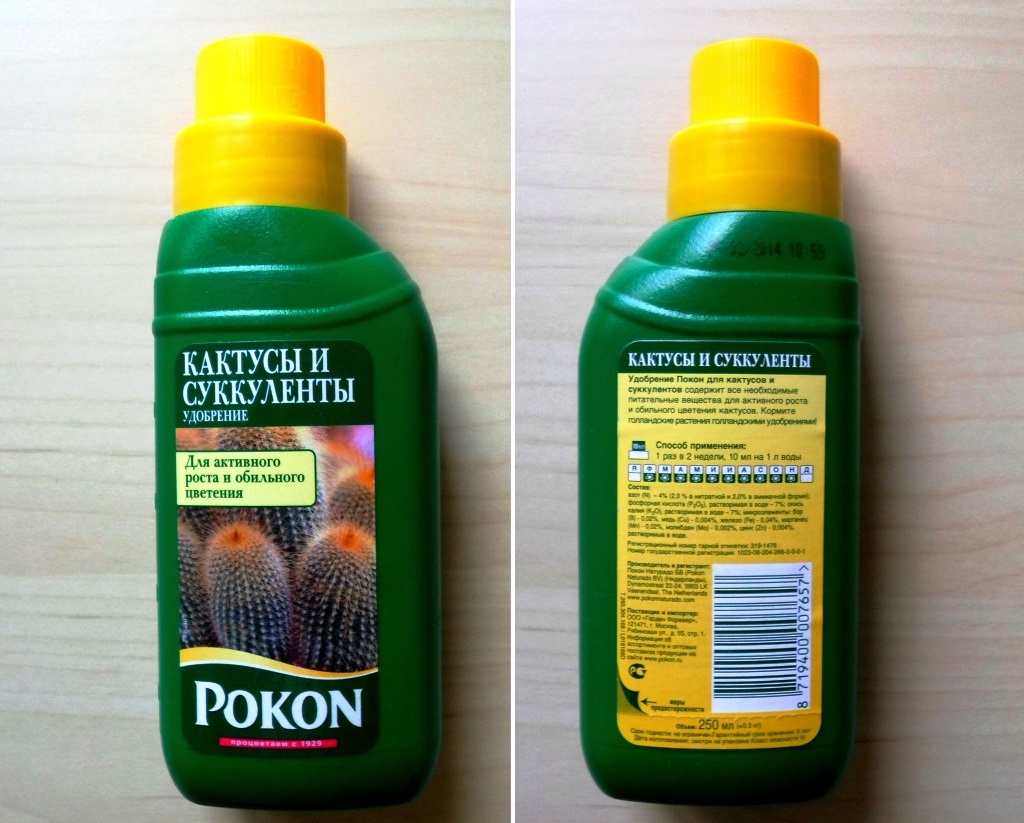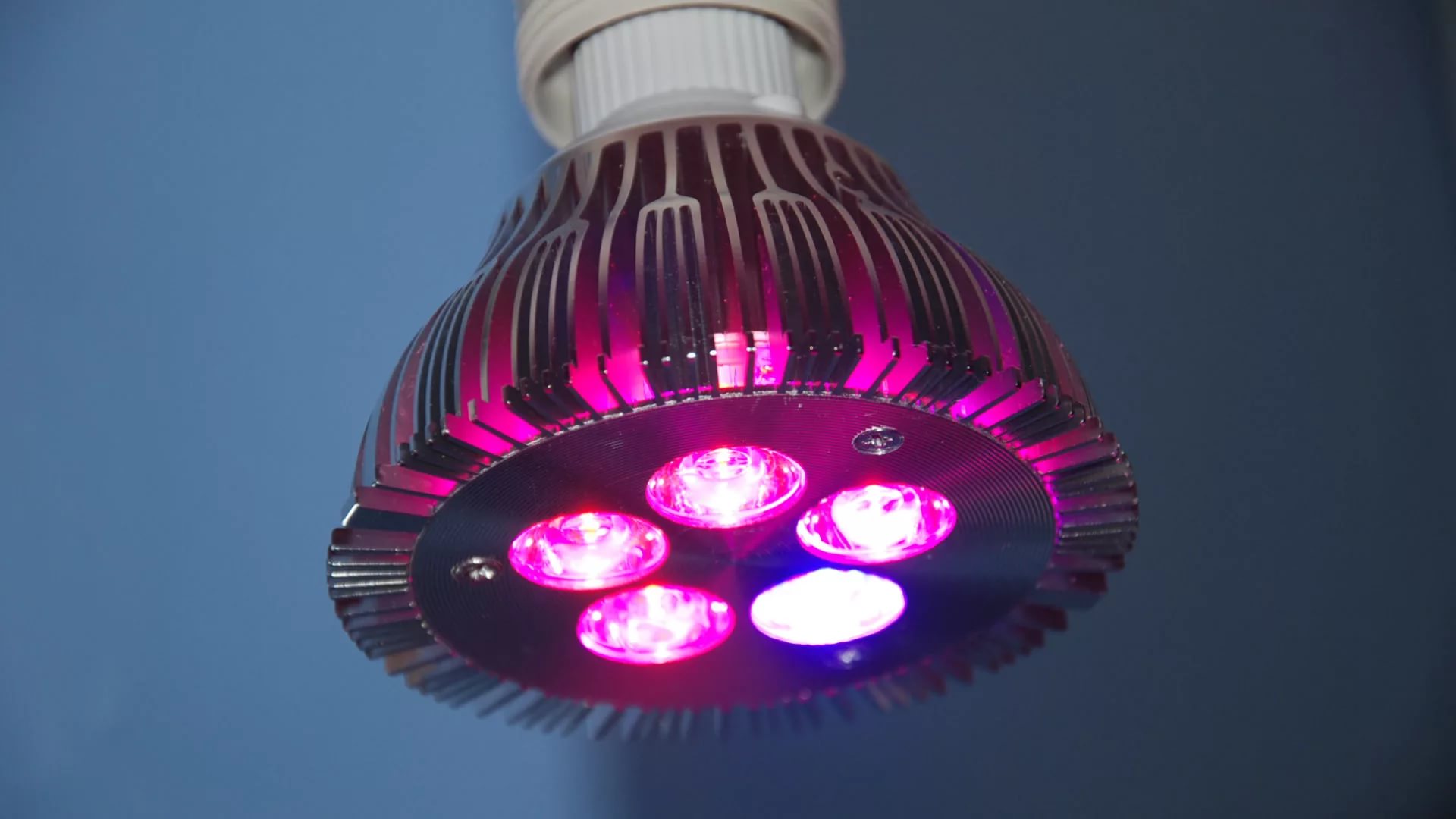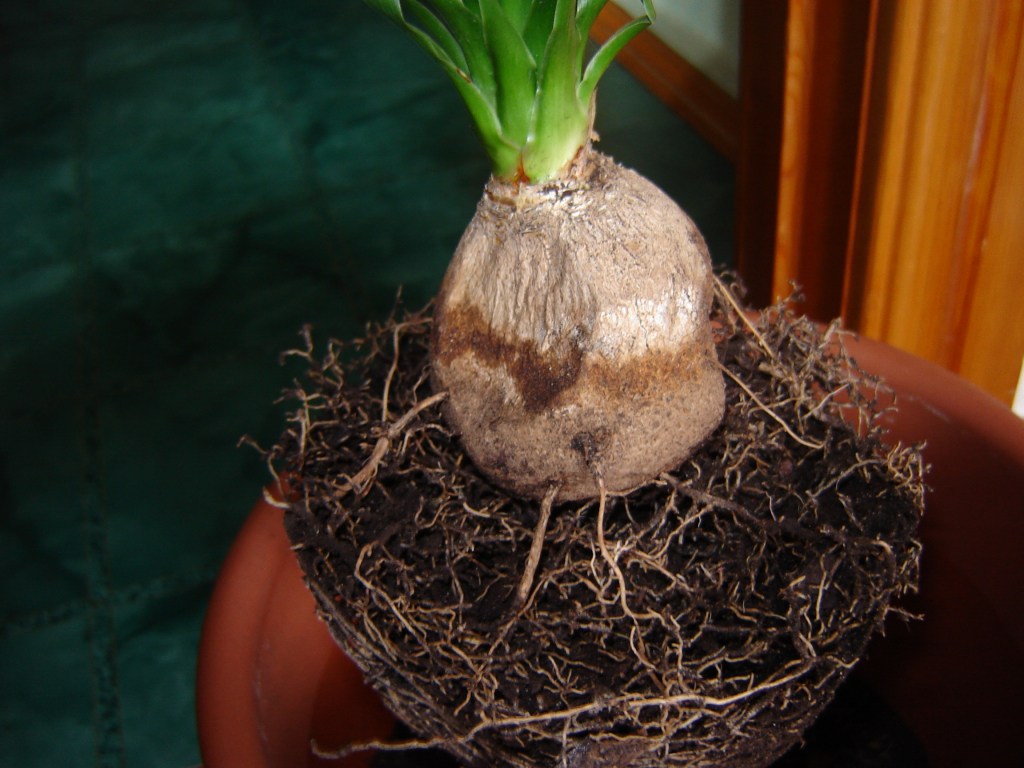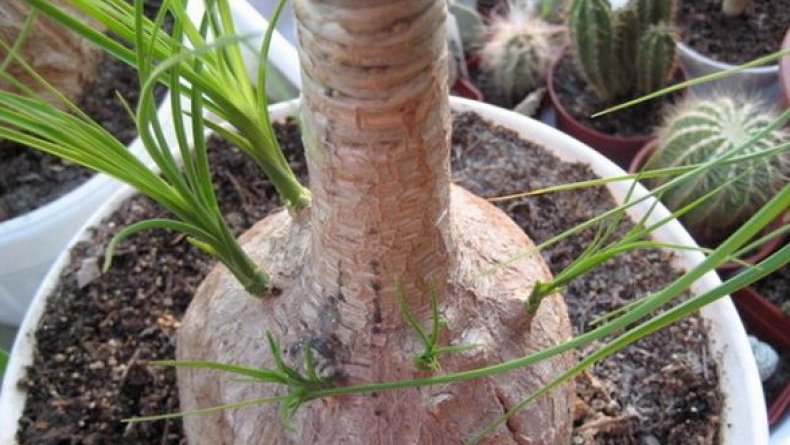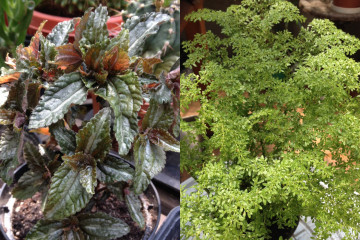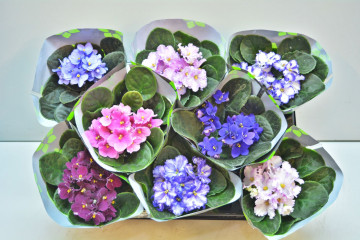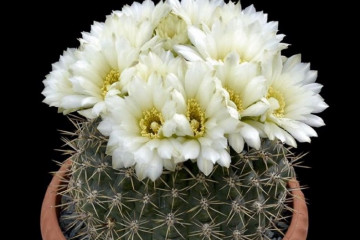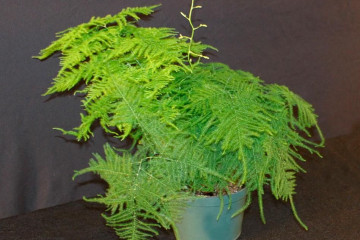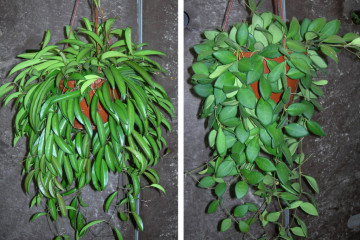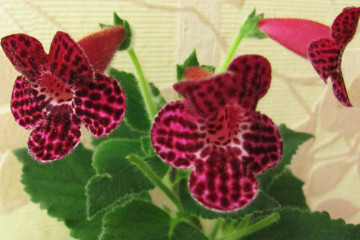Bocarnea: home care and popular types
Content:
The Asparagus family includes a plant such as bokarnea, or nolina. Under natural conditions, it reaches a height of several meters and has a thick bottle-shaped trunk, which stores the liquid reserves necessary for the plant. Thanks to breeding work, a guest from southern Mexico can be kept as an indoor crop.
Main types
At the moment, biologists have found and described 30 species of this plant.
Some representatives need to get to know a little better.
Bokarnea bent
In another way, it is called Recurvata, nolina and bent. It is the most common type. The stem of the plant swells downward. In natural conditions, the diameter often reaches 1 meter. Above are leaves, similar to ribbons, they grow in an arc and can curl, reach 100 cm in length and have a width of 2 cm. The color of the plates is dark green. This variety is most often found among domestic plants.
Beaucarney Nelson
Another name is blue bergra grass. Young plants have practically no stems. The variety reaches several meters in height.
Compressed bakarney
Differs in a squat structure. Young plants are similar to bulbs. The dried leaves of the nolina do not fall, but fall and press against the trunk. This feature makes the culture similar to a haystack.
Home care
It does not matter which type of nolina is chosen as a home plant, they all need almost the same conditions to allow them to grow and develop. Both in the wild and in the apartment, the culture grows for a very long time. Next, about sidekick care at home.
Watering
Despite the fact that the plant has long been adapted to the living conditions next to humans, it accumulates and economically consumes the moisture entering the ground.
In the summer, nolina needs frequent and abundant watering as the earthen coma dries out. Moderate hydration, even if frequent, is not suitable for this crop. Excess liquid must be drained from the pan after watering.
Some houseplant lovers use the immersion technique, which is more beneficial for the bocarnea. Constant moisture leads to the fact that the trunk begins to rot, and it is not always possible to notice the problem immediately. For a certain period of time, the strong bark will act as a scaffold for the softened tissues. If the disease is not detected immediately, then it will not be possible to save the plant.
In autumn, the frequency of watering is reduced with a gradual increase in intervals. As soon as the thermometer starts to show + 10-15 °, water is added once a month. If the indicator is below + 10 °, then the soil generally ceases to be moistened.
Top dressing
A home plant is indifferent to fertilizers, but in order to maintain its health and decorative qualities, during the period of active growth, fertilizing is applied once every 30 days. It is necessary to use special products intended for succulents and cacti, they contain a small amount of nitrogen.Too much of this trace element leads to the fact that the leaves become less rigid and lose their decorative qualities.
Suitable for bokarnei and organic fertilizers, they are alternated with mineral fertilizers. You can prepare a useful top dressing from fresh cow dung, infused for 4 days, and water at the rate of 1 part of organic matter and 20 liquid.
Spraying
Nolina is able to retain moisture, calmly survives long dry periods and is not afraid of the scorching sun. The plant feels well in dry air masses, and does not need additional moisture. In winter, after turning on the central heating, it is recommended to rarely sprinkle the bokarnea crown, but the procedure is not mandatory.
Accumulations of dust and dirt from the leaf plates must be periodically removed, however, it is not recommended to arrange a shower that is harmful to the culture. Use a damp sponge.
Lighting
The flower will feel best under a bright diffused light, so it will need to choose a lighted place. The most preferable is the southwest, southeast window.
Lack of lighting leads to curvature and elongation of the stem, so the plant will tend towards the light source. With the onset of winter, the culture is equipped with additional lighting. They choose either luminescent or special phytolamps.
Plant transplant
Young representatives are transplanted annually, which is associated with a period of intensive growth. Adult plants need a procedure every 3 years or less often, depending on the development of the earthen coma.
What are the nuances worth considering:
- the transplant is carried out in early spring, in the autumn-winter months it is possible to disturb the culture only in case of emergency;
- either the “transshipment” method is used, or the complete one;
- a week before transplanting, stop watering the plant and transplant it into dry soil;
- too large pots are undesirable for nolina due to its slow growth and difficulties in mastering excess space;
- choosing a container, take a container with a volume 2-3 cm larger than the previous one;
- the transplant is carried out without deepening the thickened stem of the flower into the ground;
- The planting container should have drainage holes through which excess liquid comes out, and the roots get access to oxygen.
Reproduction methods
For reproduction, vegetative or seed material is used. In the first case, the hassle will be much less than in the second.
Seeds
Growing from seeds is a long and not always successful procedure; several years will pass before the plant reaches a height of 1 meter.
How to plant:
- Check for germination by soaking seeds in a manganese solution for 1.5 days. Only seeds that have sunk to the bottom are suitable for planting.
- The soil is chosen light, loose with river sand.
- Planting seeds to a depth of no more than 1.5 cm.
- Soil moistening by spraying.
- Cover containers with glass or foil to create greenhouse conditions.
- Place the container on a sunny side with good lighting.
- Conducting regular ventilation and keeping the soil moist.
The first shoots appear after 28 days, sometimes somewhat earlier.After the formation of 2-3 leaves, nolin is seated. Young plants need the same care as adults.
By shoots
The dormant buds under the bark of the plant give rise to shoots that appear quite rarely. New flowers are received like this:
- using a sharp knife, make an incision as close to the trunk as possible;
- treat the cut site with activated carbon powder;
- let the appendix rest for 2 hours;
- remove sheet plates from the bottom, leave only on top;
- moisten in Epin (growth stimulant) before planting;
- place in prepared soil at a slight slope;
- Cover the pot with the plant with plastic wrap and make a small hole for air circulation;
- put the container in a warm place with diffused light;
- remove the insulation after the first signs of growth appear.
Possible problems
There are a number of difficulties that a plant lover may face when growing a Recurvata bokarnea flower.
Trunk decay
The appearance of soft spots on the trunk, lethargy of the shoots and rotting of the root system indicate frequent waterlogging of the soil, as well as the fact that the liquid enters the trunk. A low room temperature can make the situation worse. You need to deal with the problem with the following methods:
- Cutting soft tissue until healthy with a sharp blade. Removal of rotten root shoots.
- Treatment of wounds with fungicide and activated carbon.
- Put soil with pieces of charcoal in a new container to prevent acidification of the substrate.
- Watering the plant is carried out no earlier than 5 days after transplanting.
If the stem part has become soft, then the decay process has begun, which cannot be reversed; it will not work to help the plant to save it.
Foliage is faded and small
The appearance of such symptoms indicates increased dampness in the room. With good ventilation and temperature control, everything should work out.
Bocarnea flower refers to unpretentious plants, but has a number of differences from deciduous crops, which must be taken into account when providing her with care. Due to its spectacular appearance, it harmoniously fits into any interior, the main thing is that the conditions of detention are suitable.
